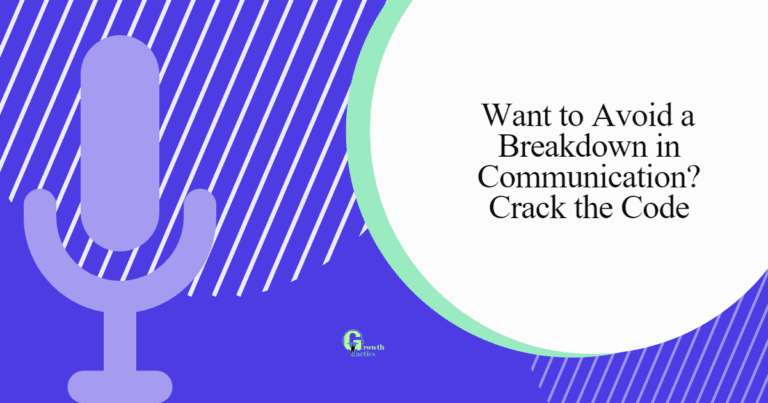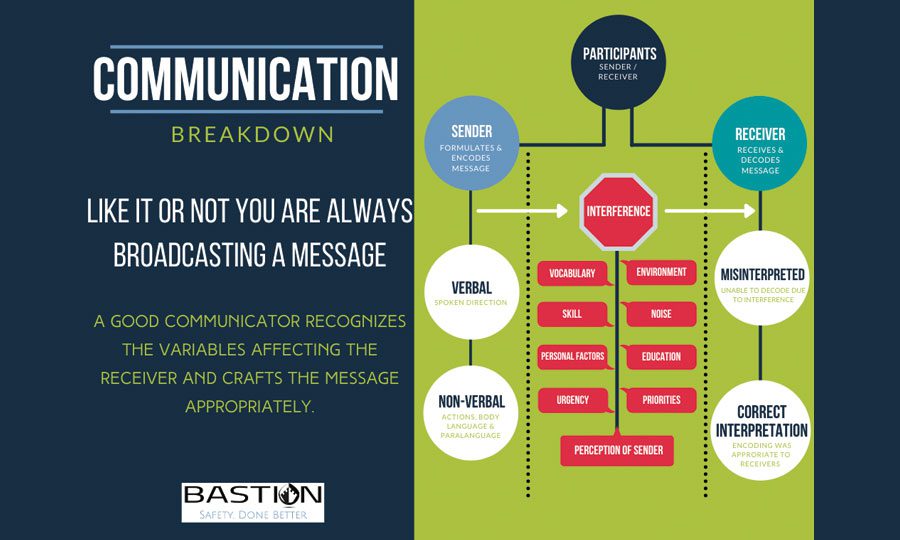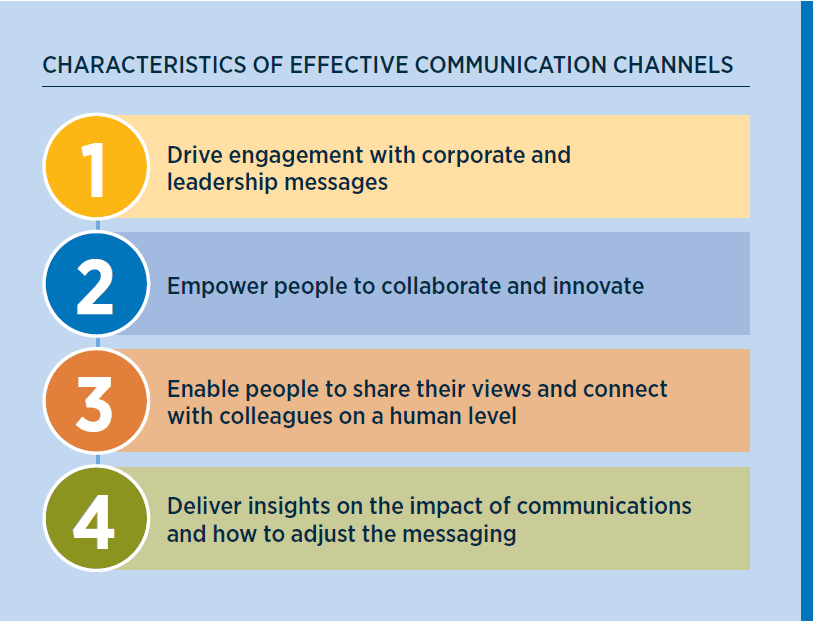Effective communication is vital in every aspect of our lives, whether it’s personal relationships, the workplace, or even in our day-to-day interactions. However, despite its importance, a breakdown in communication happens far too often, leading to misunderstandings, conflicts, and inefficiencies. In this blog post, we will explore the different causes of communication breakdowns and provide strategies to avoid them.
Jump To Section
What is Effective Communication?
Effective communication involves conveying information, accurately, and in a way that is easily understood by the recipient. It requires active listening, empathy, and the use of appropriate communication channels and tools.
What is Communication Breakdown?
Communication breakdown occurs when there is a failure in transmitting or receiving a message, leading to a miscommunication or a complete breakdown of communication. This can result from various factors, which we will explore further below.
What are Some Communication Breakdowns?
- Lack of clarity
- Language barriers
- Emotional barriers
- Distractions
- Assumptions and stereotypes
- Nonverbal cues
- Noise
- Lack of feedback
- Information overload
- Hierarchical barriers
- Lack of trust
- Timing issues
- Ineffective channels
- Ambiguity
- Technological glitches
How to Avoid Communication Breakdowns?
Lack of clarity
Communication breakdowns often occur due to a lack of clarity in the messages being conveyed. When messages are ambiguous or open to interpretation, misunderstandings can easily arise. To overcome this barrier, it is crucial to strive for clarity in our communication. This can be achieved by being explicit and specific in our language, providing clear and concise explanations, and using examples or visuals to illustrate our points. It is also important to encourage questions and seek clarification to ensure that the intended message is understood accurately.
Language barriers
In today’s globalized world, language barriers can pose significant challenges to effective communication. When individuals come from different language backgrounds, their understanding of certain words, phrases, or cultural references may differ. To overcome language barriers, it is essential to foster a culture of inclusivity and empathy. This can be achieved by providing language training programs, using translation tools or interpreters when necessary, and adopting a patient and understanding attitude towards individuals who may be struggling to communicate in a non-native language. Encouraging open dialogue and actively seeking to bridge the language gap can lead to more effective communication.
Check out these powerful strategies to mend communication breakdowns and build stronger connections! Don’t let miscommunication hinder your relationships. #CommunicationBreakdowns #Relationships #Growth
Emotional barriers
Emotions play a significant role in communication and can both facilitate or hinder effective interactions. When individuals are experiencing strong emotions such as anger, frustration, or anxiety, it can impair their ability to listen, understand, and respond to messages objectively. To address emotional barriers, it is crucial to create a supportive and empathetic environment. This can be accomplished by practicing active listening, acknowledging and validating emotions, and providing space for individuals to express their feelings before moving toward problem-solving or decision-making. By addressing emotional barriers, we can enhance communication and foster healthier relationships.
Distractions
In our fast-paced and technology-driven world, distractions have become a common cause of communication breakdowns. External distractions such as noise, interruptions, or competing demands can divert our attention from the message at hand. Internal distractions, such as preoccupations or mental multitasking, can also prevent us from fully engaging in the communication process. To overcome distractions, it is vital to create a conducive environment for communication. This may involve finding a quiet space, silencing electronic devices, or practicing mindfulness to cultivate focus and presence. Furthermore, active listening techniques, such as paraphrasing or summarizing, can help mitigate the impact of distractions by ensuring that the intended message is fully understood.
Assumptions and stereotypes
Assumptions and stereotypes can significantly influence how we perceive and interpret messages. When we rely on preconceived notions or biases, we risk misinterpreting or misjudging the intentions behind the communication. To counteract the effects of assumptions and stereotypes, we must cultivate a mindset of curiosity and openness. This involves actively questioning our assumptions, seeking diverse perspectives, and challenging stereotypes. By approaching communication with an open and unbiased mindset, we can foster mutual understanding and prevent misunderstandings caused by assumptions or stereotypes.
Nonverbal cues
Nonverbal cues, such as body language, facial expressions, and tone of voice, play a crucial role in communication. However, misreading or misinterpreting these cues can lead to misunderstandings and breakdowns in communication. To effectively navigate nonverbal cues, it is important to be aware of our nonverbal communication and to pay close attention to the nonverbal cues of others. Developing emotional intelligence and empathy can help us accurately interpret nonverbal signals and respond appropriately. Additionally, when uncertain or confused about nonverbal cues, it is essential to seek clarification through open and direct communication.
Noise
Physical or environmental distractions can introduce noise into the communication process, making it difficult to hear or fully understand the message being conveyed. To address noise-related communication breakdowns, it is important to identify and minimize environmental disturbances. This may involve finding a quieter location, using noise-canceling technologies, or scheduling meetings during less busy periods. Additionally, considering alternative communication channels, such as written messages or video calls with closed captions, can help reduce the impact of noise on communication.
Lack of feedback
Without feedback, it is challenging to ensure that messages have been accurately understood. To overcome the lack of feedback, it is crucial to actively seek feedback from the recipient(s) of our messages, allowing us to gauge their understanding and address any potential misunderstandings. Furthermore, creating a culture of open and honest feedback can foster an environment where communication breakdowns are less likely to occur. Encouraging individuals to ask questions, seek clarification, and provide constructive feedback can strengthen communication channels and enhance mutual understanding.
Information overload
In today’s information-rich society, individuals are often bombarded with an overwhelming amount of data and messages. This can lead to information overload and result in crucial messages being missed or misunderstood. To effectively communicate in the face of information overload, it is important to prioritize information, focus on key points, and use clear and concise language. Employing visual aids, such as charts or diagrams, can also help simplify complex information. Additionally, providing opportunities for individuals to process and reflect on the information can promote understanding and prevent breakdowns caused by information overload.
Hierarchical barriers
Hierarchies within organizations can create barriers to effective communication. When individuals feel intimidated or fear potential consequences for speaking up, they may withhold information or avoid expressing their opinions openly. To mitigate hierarchical barriers, it is crucial to foster a culture of open communication and psychological safety. This can be achieved by encouraging feedback and diverse perspectives, actively involving all team members in decision-making processes, and creating channels for anonymous feedback or suggestions. By dismantling hierarchical barriers, we can foster an inclusive and open communication environment that encourages collaboration and prevents breakdowns.
Lack of trust
Trust plays a fundamental role in effective communication. When trust is lacking, messages are often met with skepticism or suspicion, hindering meaningful dialogue. To address the lack of trust, it is necessary to invest time and effort in building trusting relationships with others. This can involve being transparent, reliable, and accountable in our communication and actions. Actively demonstrating trustworthiness and assuming positive intent can help build trust and create a safe space for open and honest communication.
Timing issues
Poor timing can result in missed opportunities for effective communication. This can occur when messages are delivered too late, deadlines are not communicated clearly, or conversations are initiated at inopportune moments. To address timing issues, it is crucial to prioritize timely communication and set clear expectations. This may involve setting deadlines and reminders, scheduling regular check-ins and meetings, and being mindful of individual preferences and availability. By ensuring that communication occurs at the right time, we increase the likelihood of successful outcomes and prevent breakdowns caused by timing issues.
Ineffective channels
Communication breakdowns can occur when the chosen communication channels are not suitable for the intended message. Different types of messages may require different channels to ensure maximum effectiveness. For example, complex or sensitive information may be better suited for face-to-face or video meetings, while quick updates or reminders could be efficiently communicated through email or instant messaging. To prevent breakdowns caused by ineffective channels, it is important to consider the nature of the message and choose the appropriate communication channel accordingly. Additionally, providing options for individuals to choose their preferred channel can enhance communication and reduce the likelihood of breakdowns.
Ambiguity
Ambiguous messages can lead to confusion and misunderstandings. When messages lack clarity or precision, individuals may interpret them differently, leading to breakdowns in communication. To combat ambiguity, it is critical to be explicit and specific in our communication. This involves using clear and concise language, avoiding jargon or technical terms, and asking for feedback or clarification when necessary. Providing examples, visuals, or written documentation can also help reduce ambiguity and ensure that the intended message is understood accurately.
Technological glitches
Technological glitches or issues with communication tools can significantly disrupt the communication process. Unstable internet connections, compatibility problems, or software malfunctions can hinder effective communication, leading to breakdowns. To address technological glitches, it is important to have backup plans or alternative communication methods in place. This may involve having backup internet connections, using different communication platforms, or having a contingency plan for when technical difficulties arise. Additionally, providing technical support and training to individuals can help mitigate the impact of technological glitches and prevent communication breakdowns.
Employ Efficient Communication Tools
Choosing and utilizing the right communication tools can significantly improve the effectiveness of communication. This may include email, video conferencing, project management software, or instant messaging platforms. Selecting tools that align with your specific communication needs can help avoid breakdowns. Here are a few efficient communication tools that can be used:
- Email: Email is a widely used communication tool that allows for formal and detailed communication. It provides a written record of conversations and enables the attachment of documents, making it suitable for professional communication.
- Video Conferencing: Video conferencing tools like Zoom, Microsoft Teams, or Google Meet are essential for remote collaboration. They allow for face-to-face communication, screen sharing, and real-time collaboration, making it convenient for meetings, presentations, and discussions.
- Project Management Software: Project management tools like Trello, Asana, or Monday.com help streamline communication and collaboration on projects. They enable teams to organize tasks, assign responsibilities, and track progress, ensuring that everyone is on the same page.
- Instant Messaging Platforms: Tools like Slack or Microsoft Teams provide real-time communication through instant messaging. They allow for quick and informal conversations, file sharing, and group collaboration, improving overall team communication.
- Collaboration Platforms: Platforms like Google Workspace or Microsoft 365 offer a suite of tools for communication, document sharing, and collaboration. They include email, document editing, and storage, shared calendars, and video conferencing tools, allowing teams to work seamlessly together.
When choosing communication tools, consider the specific needs of your team or organization. Evaluate the features, ease of use, integration capabilities, and security measures of each tool to ensure it can effectively support your communication requirements. Regularly assess and update your toolset as new technologies emerge and your needs evolve.
Training
Providing training and workshops on effective communication can empower individuals with the necessary skills to overcome communication challenges. This can include active listening techniques, conflict resolution strategies, and cultural awareness training. Effective communication is a crucial skill that plays a significant role in personal and professional relationships. However, many individuals face challenges when it comes to expressing themselves clearly, understanding others, and resolving conflicts. By providing training and workshops on effective communication, these challenges can be addressed, and individuals can develop the necessary skills to communicate more effectively.
One aspect of effective communication that can be covered in these training sessions is active listening techniques. Active listening involves fully focusing on and understanding the speaker’s message. It involves techniques such as maintaining eye contact, nodding and using appropriate body language, asking clarifying questions, and summarizing or paraphrasing the speaker’s words.
Active listening helps individuals to better understand others and establish stronger connections.
Another important skill that can be taught is conflict resolution strategies. Conflicts are inevitable in any relationship or workplace, and learning how to manage and resolve them effectively is vital. Training on conflict resolution techniques can include strategies such as actively seeking to understand the other person’s viewpoint, expressing one’s thoughts and feelings assertively rather than aggressively, finding common ground, and seeking win-win solutions. These strategies enable individuals to navigate conflicts constructively and build stronger relationships.
Cultural awareness training is also an essential component of effective communication. In today’s globalized world, interacting with people from different cultural backgrounds is becoming increasingly common. Cultural awareness training helps individuals understand and appreciate the diversity in communication styles, values, norms, and expectations across cultures. It equips individuals with the knowledge and skills to communicate respectfully and effectively with individuals from different cultural backgrounds.
By providing training and workshops on effective communication, individuals can acquire and enhance their skills in active listening, conflict resolution, and cultural awareness. These skills empower individuals to overcome communication challenges, establish strong connections, and navigate conflicts more effectively. Ultimately, effective communication training helps individuals become more competent and confident communicators in both their personal and professional lives.
Conclusion
Effective communication is essential for building strong relationships, fostering teamwork, and ensuring the successful execution of tasks and projects. By understanding the causes of communication breakdowns and implementing strategies to prevent them, we can enhance our communication skills and avoid the frustrations and inefficiencies that come with miscommunication. Remember, communication is a skill that can always be improved!




